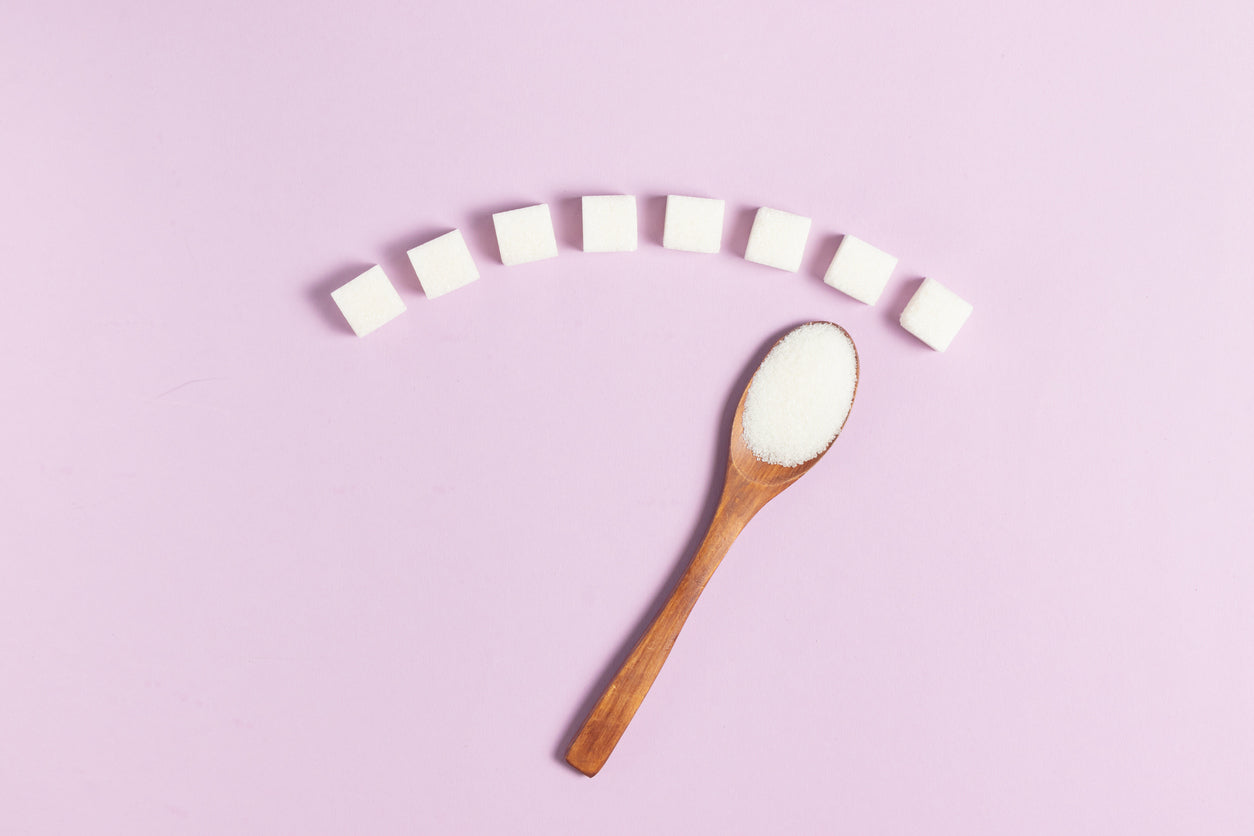5 Surprising Ways to Manage your Blood Sugar, According to a Nutritionist

5 Surprising Ways to Manage your Blood Sugar, According to a Nutritionist
When it comes to blood sugar levels, there's a unanimous consensus among nutrition experts: we should aim for stable levels and avoid sharp fluctuations.
Spikes in blood sugar levels can trigger inflammation, accelerate ageing, and can also increase the risk of developing type 2 diabetes. On the other hand, experiencing crashes or sudden drops in blood sugar can leave us feeling irritable, fatigued, and leave us feeling even hungrier.
So, it’s safe to say, it’s worth taking the time to make sure we’re eating in a way that promotes blood sugar balance.
The answer, thankfully, isn't to ditch sweet foods altogether (although moderation certainly does make things easier). Rather, it's to understand how to balance your blood sugar so that your body can optimally absorb nutrients with each eating experience. Today I’m sharing 5 simple tips that you could try for yourself to help better manage your blood sugar.
 Plan Your Macro Ratios
Plan Your Macro Ratios
It's important to understand that not all carbohydrates and sugars are created equal when it comes to their impact on blood sugar levels. While some carbohydrates can cause rapid spikes in blood sugar, it doesn't necessarily mean that you have to eliminate them entirely from your diet. The key to achieving balance is to combine your higher-carb foods and sugar with protein and healthy fats.
When planning your meals, the objective is to achieve a well-balanced ratio of carbs, protein, and fat, ensuring that your blood sugar remains stable and avoiding the risk of a subsequent crash or dramatic dip later on. Try including a source of protein, such as tofu, legumes or lean protein in your meals to help slow down the digestion of carbohydrates and the release of sugar into the bloodstream. And when it comes to healthy fats, you could also include avocados, nuts, seeds, or olive oil in your meals for a punch of omegas!
Avoid Lying Down Straight After a Meal
Avoid immediately sitting on the couch or lying down right after a meal, even though it may be tempting after a long day and a satisfying meal. Resisting the urge to be sedentary is important, as it can worsen blood sugar levels. When you're inactive, your muscles aren't able to burn off the excess glucose in your bloodstream, which can negatively impact blood sugar control.
Lying down after a meal can also trigger symptoms of acid reflux, which is especially bad news for those who are prone to indigestion. So it's important to be cautious, especially if your meal contains trigger foods like acidic tomato sauce on pizza or pasta. Waiting for some time before getting cosy under the covers can help prevent discomfort and maintain better digestion.
 Don't Skip Breakfast!
Don't Skip Breakfast!
Make sure not to skip breakfast, as it plays a crucial role in blood sugar management. While dinner often gets more attention, all meals and snacks can impact blood sugar levels, and the first meal of the day holds particular significance.
Research has shown that skipping breakfast can lead to higher post-meal blood sugar levels later in the day, even after lunch and dinner. So it's certainly worth opting for a nutritious breakfast option, like a tofu scramble with avocado, vibrant veggies, and spinach, paired with a slice of whole grain toast. This combination provides a satisfying and balanced meal that can help maintain stable blood sugar levels throughout the day.
Make Sleep a Non-Negotiable Priority
Sleep deprivation and stress can wreak havoc on your blood sugar levels, thanks to a little stress hormone named cortisol. To keep your numbers in check, make sleep a priority and aim for a solid seven to nine hours of shut-eye each night, and adopt stress-busting habits such as meditation, exercise or yoga.
 Fibre, Fibre and Some More Fibre
Fibre, Fibre and Some More Fibre
You want to make sure that your meals and snacks contain an adequate amount of fibre. When you consume refined white flour products like pizza crusts, pasta, or crackers, your body receives carbs and sugars without the presence of fibre. As a result, blood sugar spikes are more significant, since there is no fibre to promote stable levels or slow down digestion.
To manage post-meal blood sugar rises and support gut health, it's important to focus on fibre-rich foods. These foods not only contribute to balanced blood sugar levels but also foster the growth of beneficial bacteria in your gut, promoting a healthy digestive system. Try to include high-fibre foods, such as fruits with their skin, vegetables, beans and legumes, nuts and seeds, whole grains, fortified cereals and even psyllium husk.


Riya Lakhani ANutr is a registered nutritionist and health writer with a special interest in plant-based nutrition. She has completed a Bachelor’s and Master’s degree in Human Nutrition, and has developed a passion for writing about all things plant-based.

